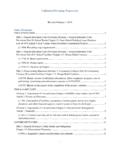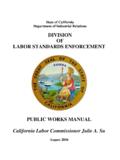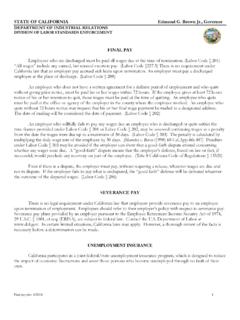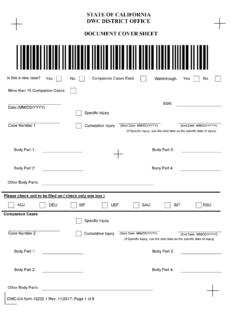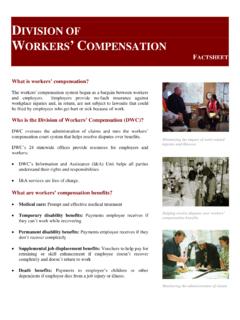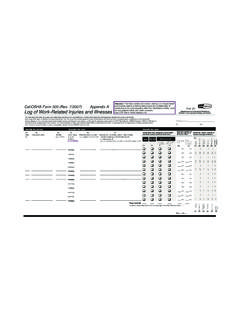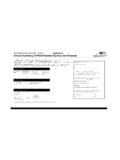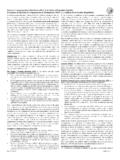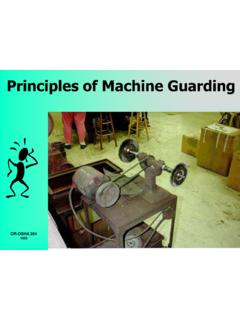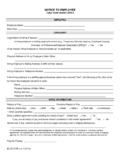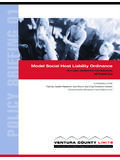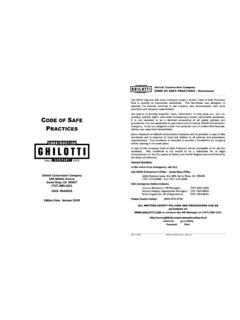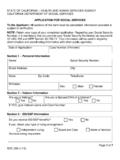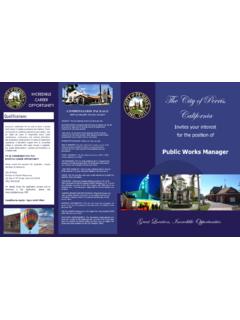Transcription of Guide to the California Hazard Communication …
1 Guide to the California Hazard Communication Regulation Department of Industrial Relations Cal/OSHA Consultation Service Research and Education Unit Guide to the California Hazard Communication Regulation This Guide is not meant to be substitute for or a legal inter- pr etation of the occupational safety and health standards. The reader is cautioned to refer directly to the California Code of regulations , Title 8, or the Labor Code for detailed and exact information, specifications, and exceptions.
2 Ii Publishing Information The Guide to the California Hazard Communication Regulation was developed by the Education Unit, Cal/OSHA Consultation Service, California Department of Industrial Relations. The document was prepared for publication by the staff of CDE Pr ess, California Department of Education. It was distributed under the provisions of the Library Distribution Act and Government Code Section 11096. First Published 2000 by the California Department of Industrial Relations iiiAbout This s in It for 2 Summary of California s Hazard Communication RegulationI.
3 Scope ..4 Application, Exemptions, and ExclusionsII. Hazard Material Safety Data Sheets (MSDSs) ..7IV. Labels and Other Forms of Warning .. Hazard Communication Program ..11VI. Employee Information and Training ..13 VII. Trade Secret Hazard Communication Program: Step by Written Hazard Communication Program Sample ..17C. Hazardous Substance Inventory List Sample ..21D. Hazard Communication Employee Training Program Sample ..22E. MSDS Request Letter MSDS Sample .. Consultation Service CoverContentsivAbout This GuideEvery day at workplaces throughout California , employees work with or are inci-dentally exposed to hazardous substances that can harm their health or causesafety hazards .
4 This Guide is designed to help employers and employees understandthe requirements of the Hazard Communication regulation by providing a simplifiedand clear overview of the major program easy reference, this Guide is separated into seven main sections:I. Scope, which explains what employers and what types of substances are subjectto the regulation, as well as the exemptions from the regulationII. Hazard Determination, which explains how responsible parties can determinewhich specific substances are hazardousIII.
5 Material Safety Data Sheets (MSDSs), which explains what an MSDS is, whatcategories it must include, and how this information can be used to educateemployees on the hazards of chemicalsIV. Labels and Other Forms of Warning, which explains labeling requirementsand the importance of implementing a visual warning system that will quicklyand effectively alert employees to potentially dangerous chemicals and situationsV. Written Hazard Communication Program, which explains all the require-ments of such a programVI.
6 Employee Information and Training, which addresses employers responsibili-ties for making sure that their employees are trained prior to starting work onthe safe handling of hazardous substances they are or may be exposed to in theirjobs and on the ways in which they can protect themselves from those hazardsVII. Trade Secret Protection, which addresses how manufacturers may comply withthe regulation without revealing the specifics of a chemical compoundAt the back of this Guide , there are six attachments intended to further assist employersin setting up or improving an existing Hazard Communication program.
7 Attachments Athrough D are samples of various elements of an effective written program. The basicformat can be tailored to reflect your individual work site and the chemical substancesfound there. Attachments E and F relate to MSDS forms how to request one from themanufacturer and what the appropriate form should look the size of the facility or number of chemical hazards , it is essential thatboth employers and employees know how to identify potentially hazardoussubstances, understand the health hazards associated with these chemicals, andfollow safe work practices.
8 Every workplace which has or uses hazardous substancesmust have a written and effectively implemented Hazard Communication program thatspecifically addresses the potential hazards found at that particular s in It for Me?Employers benefit from having an effective Hazard communicationprogram because it helps them: Identify and control hazardous substances present in their workplaces. Develop or rethink safe and efficient strategies for the use, handling, anddisposal of these substances. Promote safe and effective work practices.
9 Reduce workers compensation losses. Comply with the these elements ultimately save money and increase employee morale also benefit from a Hazard Communication program because theylearn how to identify potentially hazardous chemicals to which they may beexposed in the workplace. This increased awareness promotes the greaterlikelihood that employees will: Reduce their exposure to hazardous substances. Follow safer work practices. Protect themselves, thereby preventing work-related injuries and personnel, such as physicians, nurses, and other health care profes-sionals, can best treat injured workers when they have complete backgroundinformation on the substances to which an injured worker was responders, such as firefighters and police, benefit because: An effective response strategy depends on advance knowledge of thechemical(s) involved in a fire or chemical spill.
10 They can better protect themselves, thereby reducing the likelihood ofwork-related injuries and 2 Regulatory Requirements nder the California Labor Code and the California Occupational Safety and Health Act, all employers in California are legally obligated to provide and maintain a safe and healthful workplace for employees. The Hazard Communication regulation emphasizes workplace safety and requires employers to inform their employees of the hazardous substances to which they are exposed at the job site.
